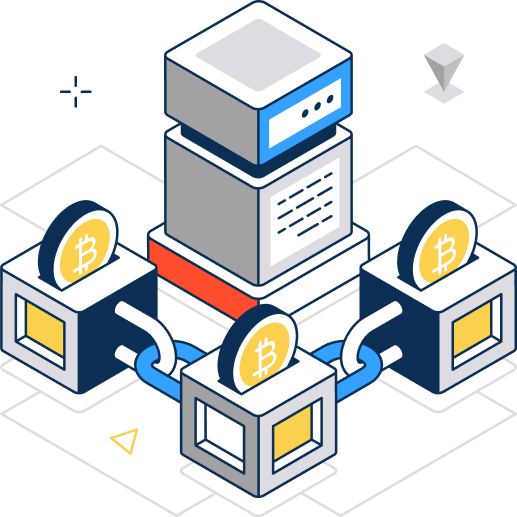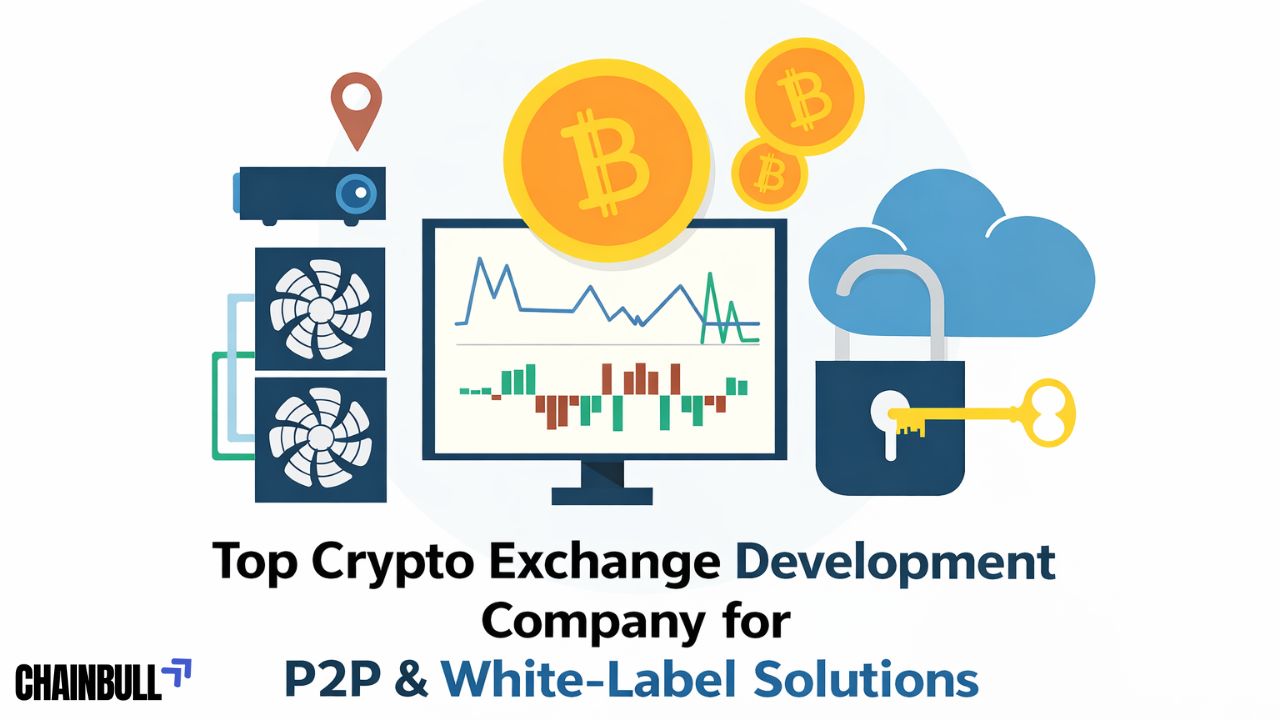
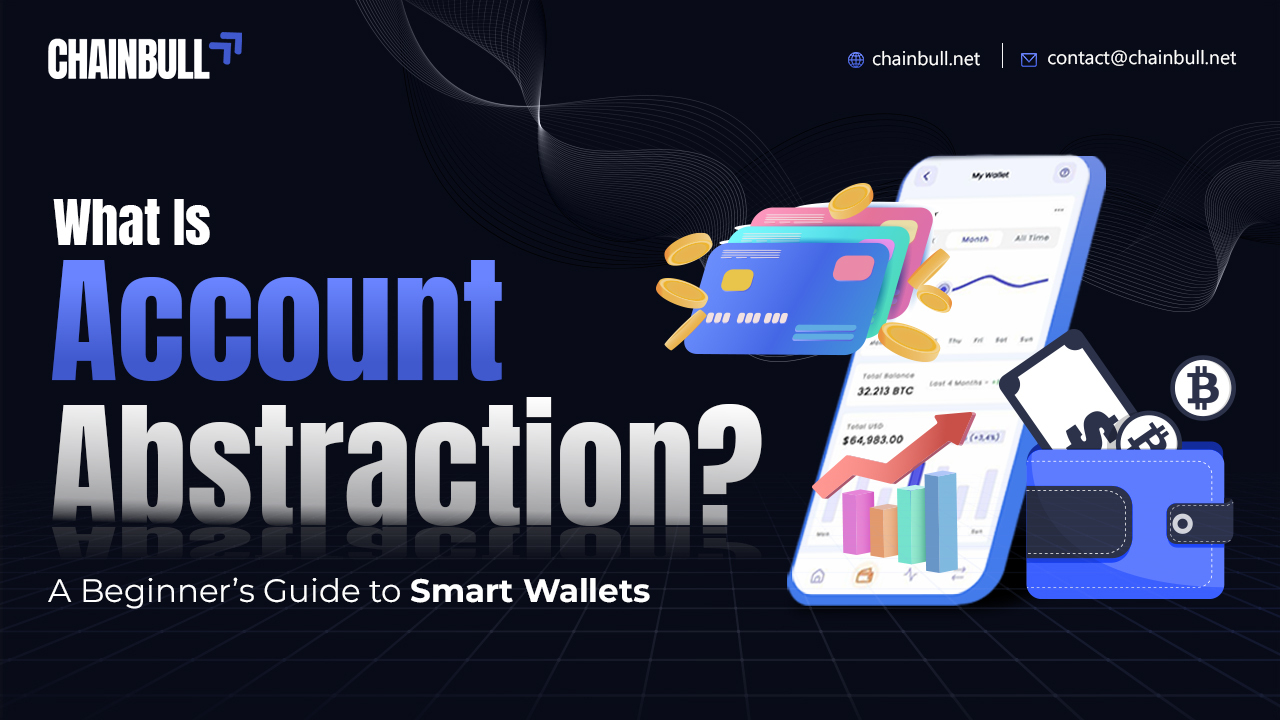
Over the past ten years, the use of blockchain technology has increased dramatically; however, daily usage still does not match what the general public expects. Sometimes making a new user wallet can be quite a challenge not to mention managing seed phrases and paying transaction fees in the native tokens. Such challenges render blockchain as something scary; thus, the entry level becomes very high for people who are not experts in complex cryptographic processes.
On top of that, the use of strictly key-controlled wallets is making the situation even worse. For instance, if you lose your private key, it means that your money will be lost and you cannot get it back at the same time, while the options for recovery are very limited. The absence of user-friendly features is a barrier to mainstream adoption. Customers are accustomed to easier login methods, such as email, biometrics, or social authentication.
Account abstraction is a solution to this problem. It does not dictate that users must use a particular method, but rather it allows the wallets to function as smart contracts. The new feature brings up features such as flexible authentication, programmable recovery, and token-based payment models. Moreover, account abstraction, by enhancing as well security as accessibility, is making blockchain technology more accessible for everyday use cases.
The concept of blockchain account abstraction can be understood more easily by revisiting the basics of blockchain accounts. The classification of accounts in Ethereum and other similar blockchains is into two broad types: Externally Owned Accounts (EOAs) and Contract Accounts.
The above division resulted in the presence of limitations that were not necessary. For instance, it was impossible for a smart contract to authenticate and control the user by itself without passing through the authentication methods of the user himself. Hence, every interaction had to be done through an EOA, which in turn depended on usually fragile seed phrases.
To put it simply, blockchain account abstraction is the removal of the strict separations between EOAs and Contract Accounts. Any account is granted the capability of being a smart contract with programmable rules.
In place of being confined to the use of private key signatures, accounts are allowed to specify the procedure of their authentication, recovery, and payment of fees. Such adaptability leads to better usability, thereby making it possible to have abstraction wallets that are akin to apps rather than cryptographic vaults in terms of their operation.
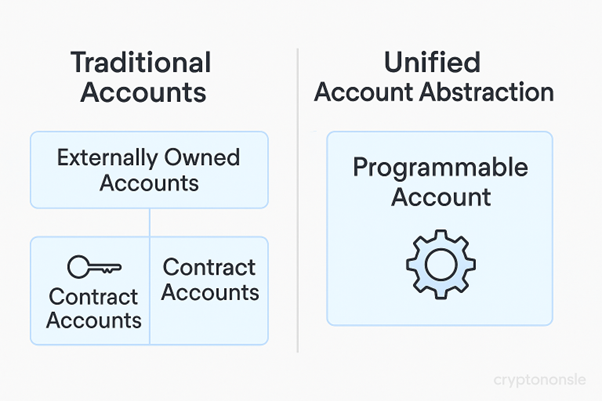
The key to making account abstraction work lies in Ethereum’s ERC-4337 standard, deployed in 2023. Rather than changing Ethereum’s base consensus, ERC-4337 introduces a new system for handling transactions.
This design allows wallets to act as programmable contracts without requiring every blockchain to overhaul its consensus rules.
Regular wallets require users to manage their seed phrases and private keys. Meanwhile, with account abstraction wallets, users are allowed to log in via their email, biometrics, or multi-device authentication. Thus, the onboarding process is more like Web2 applications, which significantly lowers the friction.
One of the most frustrating aspects of crypto is that you must have ETH or the native token of the chain to cover the fees. Nevertheless, with account abstraction wallets, users can facilitate payment in any ERC-20 token, or they may allow dApps or paymasters to cover the fees entirely, thus creating non-stop adoption.
The wallet being a smart contract system, users can also integrate multi-signature checks, daily transaction limits, or geofencing transactions. In the corporate context, it indicates that treasury wallets can become the instruments to execute corporate-level policies without relying on third-party custodians.
Don’t let your money go just because you have lost your seed phrase. Account abstraction wallets enable social recovery, trusted guardians, or hardware-based recovery systems that equip the user with a safer and simpler method to regain access.
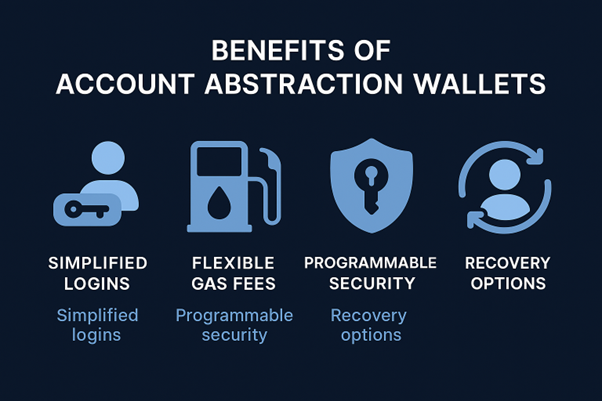
ERC-4337 is in a nutshell the main support of account abstraction. Contrary to previous suggestions, which mandated major modifications of the Ethereum protocol, ERC-4337 was launched as an “overlay” system.
It is a fact that the whole blockchain ecosystem has been dealing for a very long time with the onboarding process which, on the other hand, is pretty straightforward in the case of Web2 applications where users are used to the concept of logging in using their email, Face ID, or Google. The huge disparity between Web2 and Web3 experiences is one of the most significant adoption barriers.
Once powered by account abstraction technologies, dApp wallets will do wonders in this whole blockchain onboarding story. Such wallets allow users to interact with dApps without constantly needing tokens for gas or having to worry about the security of their seed phrases. On the other hand, for businesses, there is a possibility of new service development, such as subscriptions, automated payroll, and compliant corporate treasuries.
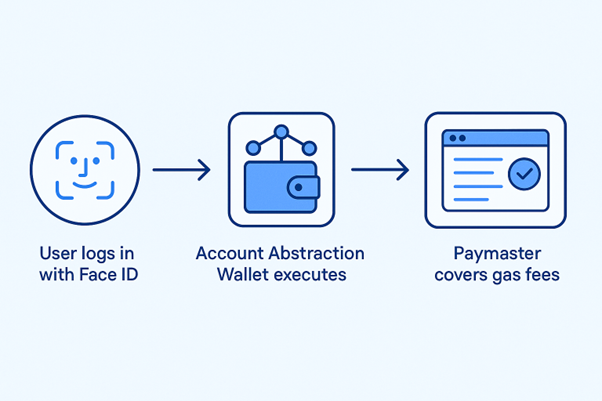
A streaming platform can bill users monthly directly from a programmable wallet, without requiring manual approval each time.
In-game purchases can be processed automatically in any token, making gameplay seamless.
Complex multi-step strategies, such as lending and staking, can be bundled into one click.
A corporation can require CFO + CEO signatures for every transaction, enforced directly by smart wallets.
This makes account abstract wallets more versatile than EOAs, paving the way for real-world blockchain integration.
As account abstraction provides more versatility, this doesn’t exempt it from potential troubles. Software glitches, programming errors, or hacking may cause wallets as a smart contract to be vulnerable. A single weak point in security can compromise user’s funds. In addition, security holes in recovery methods may give attackers the opportunity to phishing, tricking users into giving them private info, or receiving help from the guardians who are actually enemies of the user.
It is very important to carry out strictly executed audits and utilize standard frameworks to identify and manage risks. The developers have to design safe recovery methods, test the program for vulnerabilities, and come up with community-driven governance that is strong. The developers are tasked with striking an ideal balance between user convenience and security safety to prevent security issues, such as those that occurred in DeFi hacks.
Paymasters are one of the elements, which, though very much undervalued, are nevertheless just as important as account abstraction wallets. These smart contracts can directly sponsor user transactions, which means enterprises, dApps, or even ecosystems may pay the fees on the users’ behalf. In this way, onboarding friction will be minimal, consequently, new users will be able to enter the market without the need for native tokens for gas payments.
Such a system allows Web2-style “freemium” experiences while still giving users the advantage of decentralization. A DeFi platform could charge the first fees for the new users, while games might be programmed so that gas costs are zero altogether, thus making blockchain technology invisible. In this way, programmable paymasters, who get rid of the cost barriers, become the main players responsible for the acceleration of the adoption and holding the key to the accessibility of blockchain all over the world.
While Ethereum pioneered the ERC-4337 model, other chains are also exploring account abstraction.
Starknet: Natively supports smart contract wallets with built-in abstraction.
zkSync: Implements account abstraction at the protocol level for enhanced UX.
Polygon: Adopted ERC-4337 infrastructure to bring smart wallets into its ecosystem.
As interoperability improves, cross-chain account abstraction wallets will become standard, enabling seamless access across ecosystems.
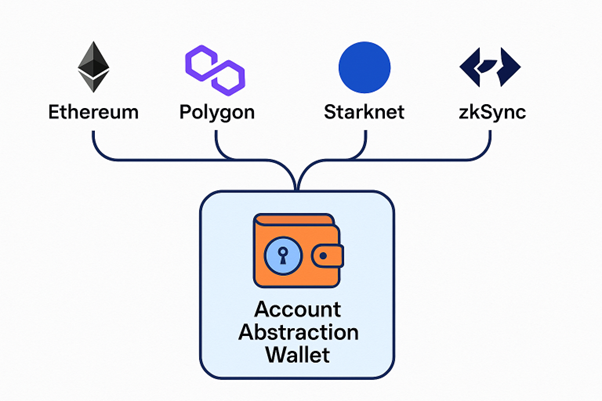
While Ethereum pioneered the ERC-4337 model, other chains are also exploring account abstraction.
Over the next decade, account abstraction will most likely become a standard feature rather than a cutting-edge one, as is the case now. Just like nowadays, no one could imagine surfing the net without secure HTTPS, future blockchain users might not even be able to tell that their wallets are using account abstraction.
Possible developments cover:
Account abstraction is basically one of the most revolutionary moves in blockchain history. It not only loosens the strict separation between Externally Owned Accounts and Contract Accounts, but it also introduces account abstraction wallets which are a new generation of programmable, adaptable and user-friendly ones. Such a change enables blockchain to go past the realm of technical difficulties and opens it up to everyday users in a way that is simpler and more secure for them to interact with Web3 applications.
This breakthrough, which is accompanied by standards like ERC-4337, leads to the fact that wallets can be more functional as they are able to have recovery mechanisms, social logins, token-based gas fees, and programmable security. The users are benefiting from these attributes in terms of usability, which doesn’t weaken the decentralization factor. Hence, a good safety and convenience equilibrium is struck. In the end, account abstraction is the factor that makes a blockchain ecosystem that can be called accessible, scalable, and ready for mainstream adoption.
Enter your email → Get instant download.
